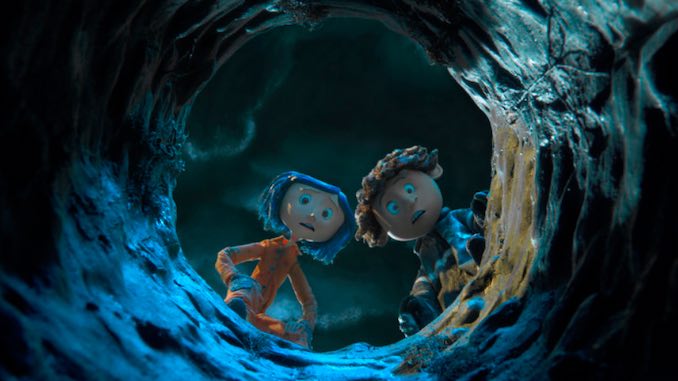Coraline Remains a Compelling Argument for Animation’s Limitless Possibilities

Once upon a time, an animated film came along that was so audaciously weird and genuinely disturbing that it’s a miracle it was ever made at all. Coraline, a 2009 masterpiece from The Nightmare Before Christmas director Henry Selick pushed boundaries of what both children’s stories and animated movies were supposed to be and do. A horror story for kids that was unafraid to be dark and refused to talk down to its audience or blunt its sharper edges for their benefit, Coraline took genuine risks with its filmmaking style and storytelling tone.
Now, as studios (looking at you, Disney) release endless sequels and bizarre photo-realistic versions of previous animated hits instead of telling new stories, films like Coraline burn even brighter as examples of the limitless possibility of what animation could—and should—be. Though there have been rumors of a live-action take on Coraline in development off-and-on for several years, it’s hard to argue that anything could seriously improve upon the joyful creativity of the original.
Celebrating its 15th anniversary this August with a return to theaters, the stop-motion animation adaptation of Neil Gaiman’s novella of the same name is genuinely astounding. From its lush colors to its beautifully disturbing monsters and uncomfortably dark themes, it’s a movie that was like nothing else that was made at the time—or that has been made since. A coming-of-age story about loneliness, family, love and gratitude, its striking blend of whimsy and horror is both genuinely scary and deeply heartfelt.
Coraline follows Coraline Jones (voiced by Dakota Fanning), a precocious, often rude 11-year-old whose family has moved to a big, empty house in the rainy Pacific Northwest. Her parents (voiced by Teri Hatcher and John Hodgman) are both writers who aren’t particularly available or hands-on. As a result, she’s often left to her own devices with little to entertain her but an assortment of charmingly odd neighbors. This all changes when Coraline discovers a mysterious hidden door that transforms into a portal to a magical alternate reality.
The Other World is dazzling, super-saturated and vibrant in all the ways Coraline’s everyday existence is gray and drab. Full of flowers, endless sweet treats, and neighbors who want to do nothing but entertain her, everything about this place seems perfect. Here, Coraline’s parents are warm and attentive: Her Other Mother makes elaborate meals of all her favorite foods, while her Other Father tends a lush, glowing garden that’s pruned into the shape of her face. They listen to her, validate her complaints and solicit her opinions, even sitting with her until she falls asleep each night in a beautifully appointed bedroom.
-

-

-

-

-

-

-

-

-

-

-

-

-

-

-

-

-

-

-

-

-

-

-

-

-

-

-

-

-

-

-

-

-

-

-

-

-

-

-

-








































